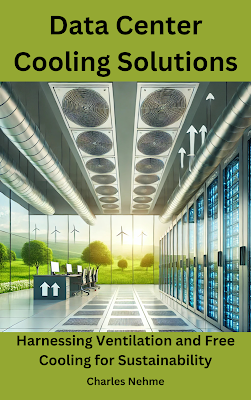Data Centers Cooling Solutions – Optimizing Efficiency and Performance
Data centers are the backbone of our digital world, housing servers that power everything from streaming services to cloud computing. However, the energy-intensive nature of these facilities poses a unique challenge: keeping equipment cool to maintain performance and prevent downtime. Let’s explore key cooling solutions that ensure optimal efficiency and sustainability in data centers.
1. Traditional Air-Based Cooling Systems
Air-based cooling remains a cornerstone in many data centers due to its simplicity and effectiveness. Key systems include:
- CRAC Units (Computer Room Air Conditioning): Circulate cool air to maintain a steady temperature.
- Raised Floors and Hot/Cold Aisle Containment: Direct airflow to ensure efficient cooling and minimize mixing of hot and cold air.
However, these systems can become energy-intensive, especially in high-density data centers.
2. Liquid Cooling Solutions
Liquid cooling is gaining traction as servers generate more heat. It involves the use of liquids, which have higher thermal conductivity than air. Popular methods include:
- Direct-to-Chip Cooling: Liquids are delivered directly to the heat-generating components, such as CPUs and GPUs.
- Immersion Cooling: Servers are submerged in non-conductive cooling liquids, which absorb heat directly from the components.
Liquid cooling is ideal for high-performance computing but requires specialized infrastructure.
3. Free Cooling
Free cooling leverages outdoor air or water to reduce the load on mechanical cooling systems. This approach includes:
- Air-Side Economization: Outdoor air is used to cool the data center when conditions allow.
- Water-Side Economization: Cool outdoor water is used in place of chillers.
Free cooling can drastically reduce energy consumption, particularly in regions with cooler climates.
4. Modular Cooling Systems
Modular systems provide scalable solutions that grow with the data center’s needs. These units are compact and efficient, with options like:
- In-Row Cooling: Positioned between server racks to cool heat at the source.
- Overhead Cooling: Mounted above racks to provide targeted airflow.
Modular systems offer flexibility and efficiency, making them suitable for evolving data centers.
5. Advanced Technologies: IoT and AI in Cooling
IoT and AI are transforming cooling management in data centers:
- IoT Sensors: Provide real-time data on temperature, humidity, and airflow to optimize cooling strategies.
- AI Algorithms: Analyze patterns and predict cooling needs, ensuring efficient energy use and preventing hotspots.
These technologies enhance precision and reduce operational costs.
6. Renewable Energy Integration
Sustainable cooling solutions include integrating renewable energy sources like solar and wind to power cooling systems. This reduces the environmental impact of data centers and aligns with global sustainability goals.
7. Heat Recovery Systems
Recovering and reusing waste heat is an innovative way to improve energy efficiency. Heat from servers can be redirected to nearby buildings for heating purposes, creating a closed-loop system that reduces overall energy waste.
Conclusion
Cooling solutions for data centers are evolving to address the dual challenge of increasing computing demands and environmental responsibility. From liquid cooling to AI-driven management, these innovations pave the way for efficient, sustainable data centers.
Want to explore advanced cooling solutions for your data center? Contact CFN-HVAC today for expert consultation!
MEP & Engineering books on Amazon, Apple, Payhip and Google
Global HVAC Consulting Services


%20connected%20to%20a%20central%20AI%20hub%20displ.webp)

Comments
Post a Comment